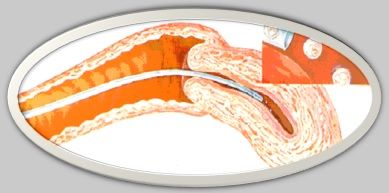
Introduction:
The transfer of Embryo relates to a part in the technique of supported reproduction in which embryos are inserted into the uterus of a female with the focus to set up a pregnancy. This approach that is frequently applied in relation with in vitro fertilization (IVF), may be employed in humans or in animals, in which conditions the pursuits may appear differently. The embryo transfer is said to be the final step of invitro fertilization process. This procedure is very important, it does not have any issues that how best the IVF laboratory culture environments, the surgeon can destroy everything with a flippantly carried out embryo transfer. The whole IVF cycle relies on fastidious insertion of embryos at the exact location close to the middle of endometrial cavity with less trauma and manipulation. The significance of exact embryo transfer approach for successful IVF cannot be exaggerated. Ultrasound guided embryo transfer is the most effective approach recently available. The woman is administered with certain injectable medicines for invitro fertilization in order to produce multiple eggs. In ovaries, the follicles are present that is the right place for eggs development, when these follicles are mature, from the ovaries the eggs are removed by egg retrieval procedure. Then the sperms are inserted into the eggs then eggs are examined for the evidence of egg fertilization. An adequate number of embryos transferred to the uterus several days later - using ultrasound guidance for best placement.
Ultrasound directed embryo transfer approach:
The process for embryo transfer appears very analogous to a Pap smear for the woman as in this technique woman does not suffer pain, sedation, inflammation and no other drugs are required. In this process a sparingly full bladder is being utilized for embryo transfer as it assists in two significant ways. It permits best ultrasound visualization of the catheter that assists with efficient and appropriate transfer of the embryos to the best location and it unfurls the uterus to a more performing approach as well, making the technique efficient and far less painful for the uterine lining and the embryos.
The embryo transfer catheter is packed with the embryos and the surgeon moves it by means of the cervical opening up to the middle of the uterine cavity. Abdominal ultrasound is applied simultaneously to examine the catheter tip advance to the exact location. It is sometimes typical to place the tip of the catheter in the proper plane of the ultrasound beam at all times - but it is very essential to manage the appropriate placement of the embryos.
When the catheter tip arrives the exact location, the embryos are then transferred to the lining of the uterine cavity (endometrial lining) by the infertility specialist physician. Just After the embryos are transferred, the catheter is slightly taken off and examined under a microscope for any clutch embryos. If an embryo is present in the catheter the transfer procedure is repeated immediately and the catheter is examined again.
Adequate position for insertion of the embryos at transfer:
Optimal position for the embryo insertion in uterine cavity is basically the middle of the endometrial cavity that is the half part from the internal os of the cervix to the uterine fundus (top of cavity) is thought to be the best position for embryo placement. Proper Care should be redirected to place the catheter between the top and bottom layers of the endometrium and not to permit it to dissect under the endometrial surface. This is called subendometrial embryo transfer. Pregnancies will occur with subendometrial placement of the embryos, but the chances of success are very less.
About 9-11 days after the transfer (9 days for day 5 transfer and 11 days for day 3 transfer), a blood test is performed to search out if she is pregnant. If embryo implantation has occurred, human chorionic gonadotropin (hCG) hormone will be perceptible in the mother's blood at that time.
Risk associated with embryo transfer:
There are minimal chances of risks associated with embryo transfer. it includes the loss of the embryos during transfer or implanting the embryos in the wrong place such as the fallopian tubes. Although some women experience mild cramping, the procedure is usually painless.
Activity restrictions after IVF transfer:
- The women lie on her back for 1 hour after embryo transfer before going home.
- Women also limit physical activity for the rest of that day. This means bed rest after the IVF transfer for the rest of the day and that night
- Normal activity like working, walking around, etc. beginning the morning after the embryo transfer.
- Heavy bouncing of the uterus is restricted until after the pregnancy test. Therefore, water skiing, jogging, "uterus bouncing sex", and other high impact activities are probably not a good idea until after the pregnancy test.
Conclusion:
The embryo transfer procedure is a simple procedure that follows in vitro fertilization (IVF) and is often considered the simplest and final step of the in vitro fertilization process. The objective of embryo transfer is to facilitate conception following fertilization from the in vitro fertilization procedure.
World Laparoscopy Hospital, Cyber City, DLF Phase II, Gurugram, NCR Delhi, 122 002, India
PHONES:
For Training: +919811416838
For Treatment: +919811912768
For General Enquiry: +91(0)124 - 2351555
Email: contact@laparoscopyhospital.com





